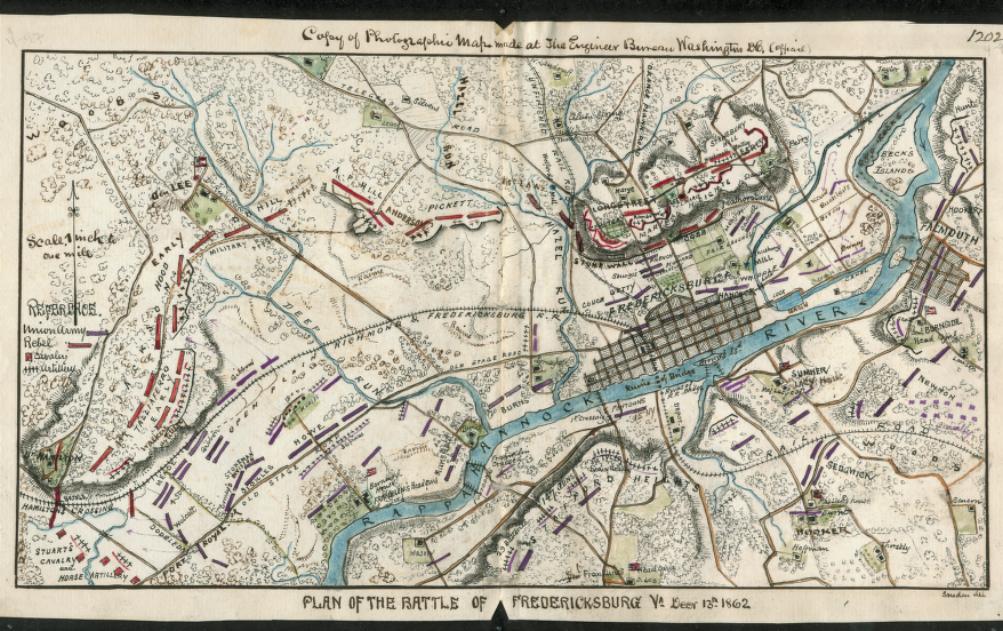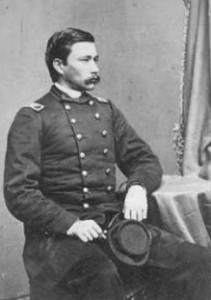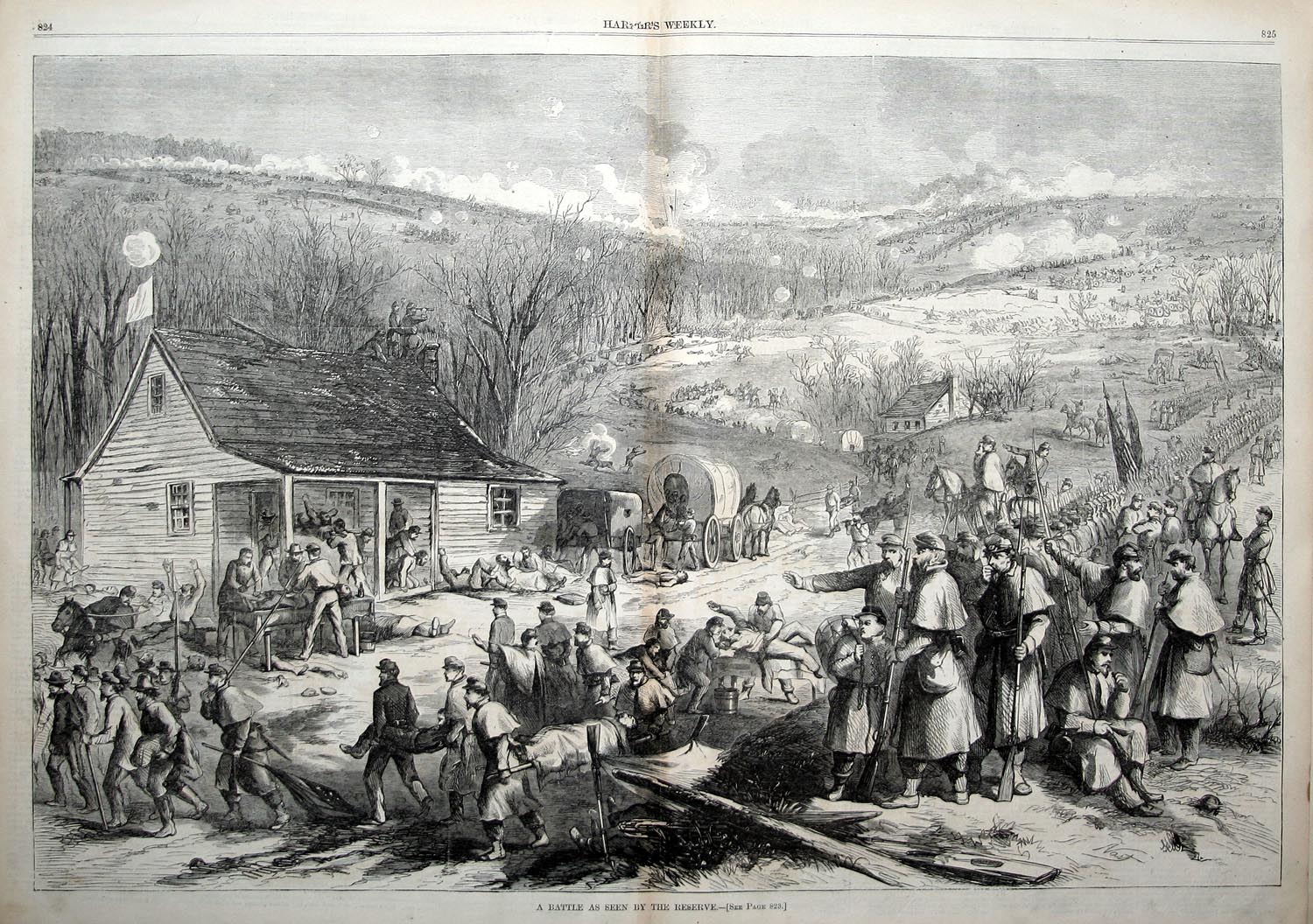
150 years ago today Federal and Confederate generals were deciding their next steps in the aftermath of the December 13th slaughter at Fredericksburg, news of which would start making its way back to the public(s) at large.
Here’s a couple stories from Seneca County, New York newspapers from December, 1862. The first article relates to the December 11th Union construction of pontoon bridges across the Rappahannock:
Wounded at Fredericksburg.
The telegraph in giving an account of the operations of the Engineer Corps, in throwing pontoon bridges across the Rappahannock furnishes a list of those killed and wounded by the rebels in this hazardous undertaking. Among the number was was the name of Capt. JAMES H. MCDONALD, of this village attached to Stuart’s Engineer Regiment. He was wounded in the arm though not seriously, as we are glad to learn. In a letter to his wife, dated Fredericksburg, Dec. 12th, he says: “yesterday morning about half-past five o’clock, while taking my men on to a pontoon bridge that we were constructing for the second time in the face of the enemy’s fire, I received a rifle ball through my elbow. – It is not serious so far as I can learn from the doctors. Yours, very tired,
JAS. H. MCDONALD
P.S. – Sterling Wickes slightly wounded. Capt. Perkins, that you saw, is killed. Capt. Brainard and myself are the only officers wounded. Lost thirty men.”
Capt. PERKINS is from Geneva, and was shot through the head. STERLING WICKES is a resident of this place.
You can read a good account of the December 11th action at The Civil War 150th Blog.
The most prominent officer killed at the battle of Fredericksburg was Brig. Gen. GEORGE D. BAYARD, one of the most gallant cavalry officers of the regular army. He was a native of this village, and a son of SAMUEL BAYARD. He graduated at West Point in 1856. In 1861 he was promoted to a captaincy of the Fourth United States Cavalry and soon made Brigadier General. Gen. BAYARD was a gallant and meritorious officer.
An article about George D. Bayard by David Lay at The Bivouac includes the following:
Brigadier-General Bayard commanded cavalry brigades in the Department of the Rappahannock, Mountain Department, Army of Virginia, and Army of the Potomac. Bayard and his Cavalry Brigade opened the Battle of Fredericksburg on December 13, 1862, holding the Rebels until the Federal infantry could be positioned. He was struck in the hip by a shell fragment later that afternoon while at Major-General Franklin’s headquarters in a grove of trees near Fredericksburg, and died the following day, within days of his pending marriage. General Franklin reported of Bayard “the loss of this gallant young general is a severe blow to his arm of the service, and in him the country has lost one of its most dashing and gallant cavalry officers”.
This image by Thomas Nast is hosted at Son of the South. The same December 27, 1862 issue of Harper’s Weekly includes Nast’s description of the scene.

![Building pontoon bridges at Fredericksburg Dec. 11th. ([1862] December 11, by Alfred R. Waud; LOC: LC-DIG-ppmsca-21209) Building pontoon bridges at Fredericksburg Dec. 11th. ([1862] December 11, by Alfred R. Waud; LOC: LC-DIG-ppmsca-21209)](https://www.bluegrayreview.com/wp-content/uploads/2012/12/21209r1-300x265.jpg)

